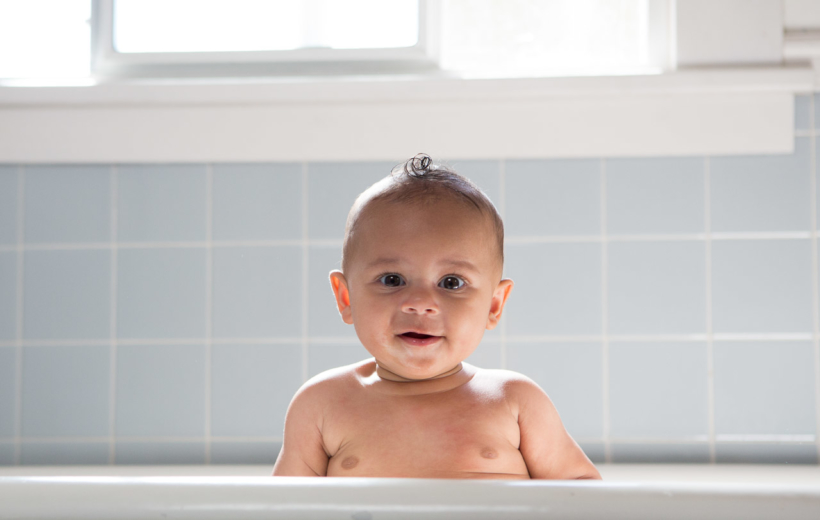
September is National Baby Safety Month. An important and often overlooked facet of this is bath safety. According to the American Academy of Pediatrics: “Most child drownings inside the home occur in bathtubs, and more than half of bathtub deaths involve children under 1 year of age.”1
The most important rule of thumb is to never leave your baby or infant unsupervised. You should always be within an arm’s length. Babies can drown in as little as one inch of water. Even if you have to step out of the bathroom for a few seconds, cover your baby in a towel, and take him or her with you.
Other friendly reminders:
1. Have all supplies within reach.
Make sure to gather everything you will need before bathing so you won’t have to disrupt bath time or be tempted to leave your baby while you get a forgotten item.
2. Keep the room warm.
Especially after bathing and drying, your baby may feel cold. Keep the bathroom temperature between 70°F and 80°F to help them feel comfortable.
3. Start cold water first.
When preparing the bath, turn on the cold water before the warm water, and turn the warm water off first. This prevents the tap from becoming too hot to the touch.
4. Prevent hot spots.
Swirl the water around in the tub to ensure a consistent temperature throughout and prevent scalding.
5. Fill the tub first.
Place the baby inside only after you have already filled the tub to the appropriate depth and temperature. Only about 2-4 inches of water is needed at body temperature. You can check the temperature with the inside of your wrist or elbow. The water should feel neither hot nor cold. Don’t place your baby in the tub while the water is still running.
6. Set your water heater to 120°F or less.
Scalding can occur at higher temperatures. With this limit, even if your baby inadvertently turns on the faucet, the maximum temperature will be in the safe zone to prevent scalding.
7. Avoid falls.
Don’t allow toddlers to stand in the bathtub and consider installing bath mats with grip to help prevent slipping.
8. Limit access to the faucet.
Keep babies away from the faucet by placing their back against it. A spout cover helps protect your child from hitting their head or body on the faucet.
9. Drain the water.
As soon as bath time is over, make sure to drain the water right away to avoid leaving a potential hazard for later.
10. Baby-proof your bathroom.
All medications and electrical items should be safely locked away and out of reach, including hair driers and curling irons. Install cabinet locks on all cabinets and drawers. Toilet seats should also be locked and covered to prevent your child from falling in. Safety gates and door latches for the bathroom can provide an added layer of security during non-bath times.
By observing these safety measures you are well on your way to making bath time a safe and enjoyable experience!
1 https://www.healthychildren.org/English/safety-prevention/at-play/Pages/Infant-Water-Safety.aspx
Related Stories



